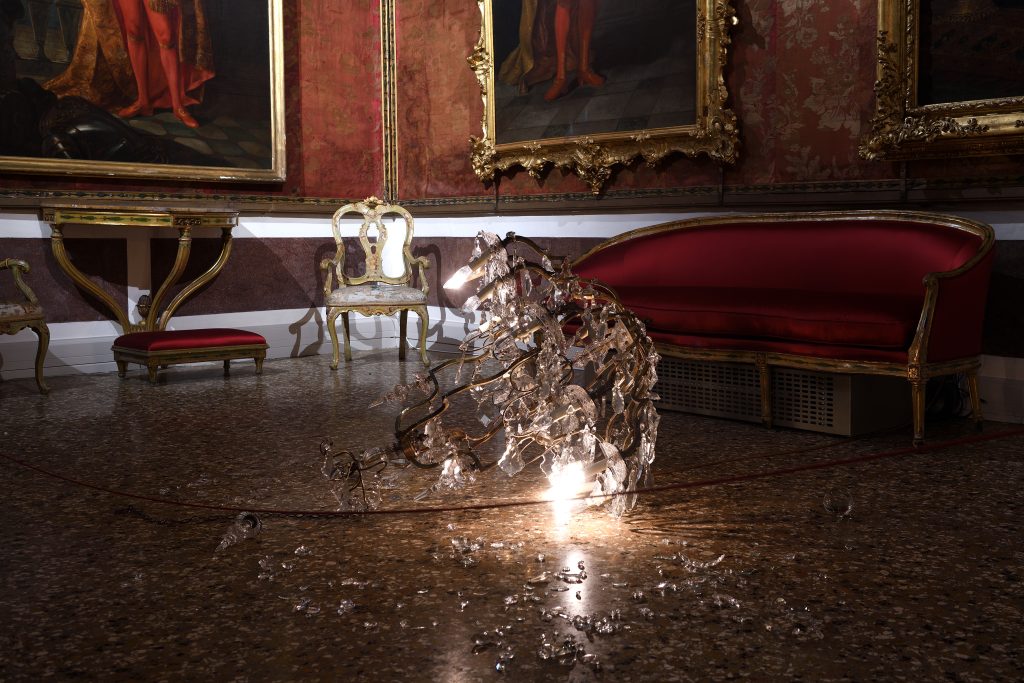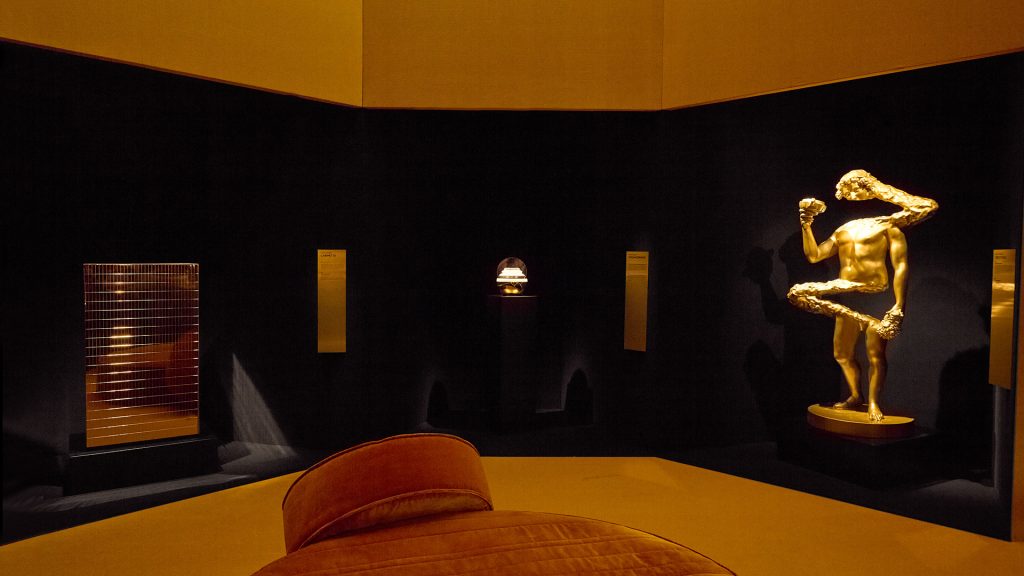Inside Conceptual Artist Duo Christo + Jeanne-Claude’s Downtown NYC Home + Studio
Studio manager Lorenza Giovanelli walks us through in advance of a momentous Sotheby’s auction
More than 50 years ago, following a stint at the Chelsea Hotel, world-renowned conceptual artist duo Christo and Jeanne-Claude moved into two floors of a slender industrial building in NYC’s SoHo neighborhood. There, they lived—and developed large-scale installations like “The Gates,” “The Umbrellas” and “The Pont Neuf Wrapped“—until Jeanne-Claude’s death in 2009 and Christo’s in 2020. Though private, the residential floor frequently welcomed friends of the couple while the studio doubled as a showroom for Christo’s works. Today, both floors remain imbued with their artistic energy.
In advance of this February’s 400-lot Sotheby’s auction, Unwrapped: The Hidden World of Christo and Jeanne-Claude, dedicated to works the duo had collected by other artists, alongside spectacular pieces they themselves produced (proceeds of which will go to the artists’ estate), we toured the residence and workspace with Christo’s longtime studio manager, Lorenza Giovanelli. Before our arrival, paintings and sculptures by dozens of celebrated artists had already been shipped to Paris for the auction. Without those Unwrapped works, the two floors stood as a testament to couple’s unparalleled accomplishments.

Giovanelli has lived on-site for the last four years. Christo, she tells us, “moved here in 1964. On 17 November, he came here for the first time to see the space because his friend Claes Oldenburg told him that there were two vacant floors.” When he arrived, there was nothing inside. The floors were $70 each per month. Technically, Jeanne-Claude and Christo lived there illegally for a very long time, as it was a building for studios only. The pair pretended their home was a child portraiture studio in order to avoid questions from the authorities. A sign above the door to the residence still alerts people that photography may be underway.

Most of the furniture that populates both floors was either handmade or taken from the street. “All the tables and stools were made by Christo,” Giovanelli says. “But they’d hunt for pieces at night, in the streets, especially on garbage day. Jeanne-Claude, with her great sense of humor, loved to point out things that they found on the street.” Even the working stove in their kitchen was repurposed from an apartment in Brooklyn. It dates back to the 1920s.

Nuance and defiance populate the residential space. The rough hewn dining room table entertained Jasper Johns, Leo Castelli and other art industry titans. In the ’60s, they hosted guests almost every other night. One narrow room off of the living room now harbors years of documentation and archival materials. In it, a ladder ascends to the former lofted bedroom of their son, Cyril. The plants, Giovanelli says, “have been there since the ’60s and ’70s.”

One floor up, Christo iterated ideas, explored materials, sketched, painted and wrapped. He built scale models by hand; many of these remain. “Nothing has been touched since Christo passed away,” Giovanelli says. “Nothing has been thrown out. Christo loved to keep everything. He was proud to say that the studio had never been cleaned since 1964.” Walking through the studio reveals pencils exactly where they were last used; tape lines the floor, where Christo often worked, wearing kneepads.
Messages they left to one another can be found on the walls and atop desks. But an illustration Christo drew of the Arc de Triomphe wrapped in his signature style is the studio’s current visual anchor. It is also the very last drawing he made—and outlines his project “Arc de Triomphe Wrapped” which will move forward despite his death. (Right now, it is scheduled for 18 September to 3 October 2021). An example of the blue-silver fabric that will unfurl over the Parisian landmark sits on a nearby table.

“He always said that his approach was like that of an architect,” Giovanelli tells us. “These structures are built to be permanent structures that won’t remain. They are temporary. He never liked the word ‘ephemera.’ Ephemera is too poetic. He always said that his projects are very real—real people, real construction work. They are tactile. To create that, you have to respect the language of reality. Even if they disappear, the memories will never fade.”

Though their collection is gone (as per Christo’s wishes), art and the evidence of creation can be found everywhere. “They never described themselves as art collectors because most of the works came as gifts or were traded with other artists,” Giovanelli says. “That’s why this collection at Sotheby’s is so personal. Every piece has a face. Every piece is a person to Christo and Jeanne-Claude. They would connect the work to experiences that they lived. Everything was here. It surrounded them all the time. The walls were full from the bottom to the top. It was in the kitchen and the bedroom. It was on the floors.”

Browsing the Sotheby’s catalog for Unwrapped reveals works from so many different artists, from diverse backgrounds, producing at various ages across generations and time periods. “But they looked great together,” Giovanelli says. “It was a very curious dialogue. They were never mute. You went to the bathroom and you saw the [Lucio] Fontana on the way. It was Christo and Jeanne-Claude’s Fontana.”

Though each piece carries extremely personal value, few come close to the Gerrit Thomas Rietveld chair. “They brought it from Paris when they left because it was the most valuable thing that they owned,” Giovanelli says. “They put it there [in the living room] and it never changed place. It was the first thing they wanted people to see when people walked in.”
Jeanne-Claude specifically asked Christo collector Martin Visser for it in 1963, when visiting his home in Holland. Visser was friends with Rietveld, an acclaimed architect as well as a designer, and a trade was arranged. “It came with a beautiful surprise,” Giovanelli says. “Visser asked Rietveld to write a note for Christo. Instead of a simple note, he made a sketch of the chair and dated it “Chair 1919″—the date the chair was made. He signed it to ‘Mr. Christo, December 1963.'”

“They were extremely generous with one another,” Giovanelli says of artists in their circle, which included Marcel Duchamp and Nam June Paik. “They supported one another in an extremely competitive environment. This is a collection that talks about friendships over a lifetime.” Yves Klein’s “Blue Monochrome (IKB 19)” is part of the collection. Klein was originally a skeptic but ended up as a Christo collaborator.
Warhol’s “Jackie” didn’t arrive in the collection as a gift from Warhol. Giovanelli recounts a comedic tale. Although the artists knew each other (Christo and Jeanne-Claude would go to the Factory to watch movies), they got the work from Village Voice writer David Bourdon, who grew tired of it. In a comical move, Jeanne-Claude paid Bourdon one dollar more than its appraised value.

“They brought their own art outside of the museum because they wanted people to enjoy it—to be close to it. Art only makes sense when people can enjoy it,” Giovanelli says. Although she notes the residence feels emptier without the collection, she says, “I see every piece of work as a storyteller and storytellers are meant to tell their stories. This preserves Christo and Jeanne-Claude’s legacy as well as the legacies of the artists who produced them—not only because they’re beautiful but because they’re steeped in meaning. They always said nothing is forever. These works had to go. They needed to have their second, third and fourth lives.”
Hero and slideshow images by Alexandre Corda





















